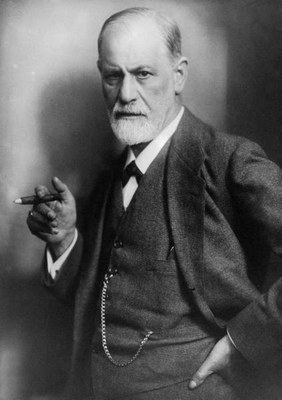Sigmund Freud (1856–1939)
by
—
last modified
2020-05-25T11:48:47+02:00
Wikimedia Commons (public domain)
Wikimedia Commons (public domain)
Max Halberstadt (1882–1940), portrait of Sigmund Freud (1856–1939), black-and-white photograph, ca. 1922; source: Wikimedia Commons, http://commons.wikimedia.org/wiki/File:Sigmund_Freud_LIFE.jpg, public domain.
Antisemitism@Antisemitism@BE@freigabe
The Boundaries of Science / Pseudoscience@Pseudoscience@(BE)@freigabe

